
The TurboGrafx-16, known as the PC Engine outside North America, is a home video game console designed by Hudson Soft and sold by NEC Home Electronics. It was the first console marketed in the fourth generation, commonly known as the 16-bit era, though the console has an 8-bit central processing unit (CPU) coupled with a 16-bit graphics processor. It was released in Japan in 1987 and in North America in 1989. In Europe, the console is known as the PC Engine, after the Japanese model was imported and distributed in the United Kingdom and France from 1988. In Japan, the system was launched as a competitor to the Famicom, but the delayed United States release meant that it ended up competing with the Sega Genesis and later the Super NES.

Legend of the Galactic Heroes, sometimes abbreviated as LOTGH, LOGH, LGH or Gin'eiden (銀英伝) in Japanese, is a series of epic science fiction novels written by Yoshiki Tanaka. In humanity's distant future, two interstellar states – the monarchic Galactic Empire and the democratic Free Planets Alliance – are embroiled in a never-ending war. The story focuses on the exploits of rivals Reinhard von Lohengramm and Yang Wen-li, as they rise to power and fame in the Galactic Empire and the Free Planets Alliance, respectively.

Raiden is a 1990 vertically scrolling shooter arcade video game developed by Seibu Kaihatsu and published by Tecmo in Japan. The game's story takes place in the year 2090, when an alien species known as the Crystals invaded Earth. Players assume the roles of the Vanquish Crystal Defense pilot duo, taking control of two state of the art Fighting Thunders aircraft to defeat the Crystals and save the Earth.

Fatal Fury Special, known as Garō Densetsu Special in Japan, is a 1993 fighting game developed and published by SNK and originally released for the Neo Geo arcade and home platforms. It is an updated version of 1992's Fatal Fury 2, introducing several changes to the gameplay system while expanding the available character roster.
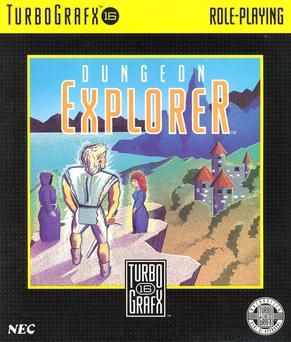
Dungeon Explorer is an action role-playing video game developed by Atlus for the TurboGrafx-16 and originally published by Hudson Soft in Japan on March 4, 1989, and later in North America by NEC on November 15 of the same year. The first installment in the eponymous franchise, the game is set in the land of Oddesia, which has been overrun by an alien race and where players assume the role of one of eight main characters tasked with recovering the Ora stone to kill the alien king Natas. Co-directed by Kazutoshi Ueda and Yōsuke Niino, the title was created by most of the same team that would work on later several projects such as entries in the Megami Tensei series. Though it was initially launched for the TurboGrafx-16, it was later re-released through download services for various consoles.

Popful Mail: Magical Fantasy Adventure is a side-scrolling platform game developed by Nihon Falcom. It was originally released for the NEC PC-8801 home computer in 1991 and the PC-9801 in 1992. The game was later ported to the PC Engine CD-ROM by NEC Home Electronics, to the Sega CD by Sega, to DoJa mobile phones by Bothtec, and to the Super Famicom and Microsoft Windows by Falcom.

Wonder Boy in Monster World, known in Japan as Wonder Boy V: Monster World III, is a side-scrolling action role-playing game originally developed by Westone and published by Sega for the Mega Drive/Genesis in 1991. It is the fifth game in the Wonder Boy series and the third game in the Monster World sub-series, following Wonder Boy in Monster Land and Wonder Boy III: The Dragon's Trap.
The Legend of Heroes, known in Japan as Eiyū Densetsu, is a series of role-playing video games developed by Nihon Falcom. First starting as a part of the Dragon Slayer series in the late 1980s, the series evolved into its own decade-spanning, interconnected series with seventeen entries, including several subseries. All games in the franchise released since 2004 are part of the Trails subseries, known as Kiseki in Japan. The most recent entry, The Legend of Heroes: Trails Through Daybreak II, was released in 2022.
This article chronicles the releases associated with the long running novel, manga and anime series Legend of the Galactic Heroes.

Ys I: Ancient Ys Vanished, also known as Ys: The Vanished Omens or The Ancient Land of Ys, is a 1987 action role-playing game developed by Nihon Falcom. It is the first installment in the Ys series. Initially developed for the PC-8800 series by Masaya Hashimoto and Tomoyoshi Miyazaki, the game was soon ported to the Sharp X1, PC-98, FM-7, and MSX2 Japanese computer systems.
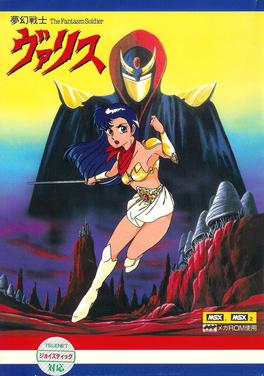
Valis: The Fantasm Soldier is a 1986 action-platform video game originally developed by Wolf Team and published by Telenet Japan for the MSX, PC-8801, X1, FM-7, and PC-9801 home computers. It is the first entry in the Valis series. It stars Yuko Asou, a Japanese teenage schoolgirl chosen as the Valis warrior and wielder of the mystical Valis sword to protect the Earth, the land of spirits, and the dream world Vecanti from demon lord Rogles. Through the journey, the player explores and search for items and power-ups, while fighting enemies and defeating bosses to increase Yuko's attributes.
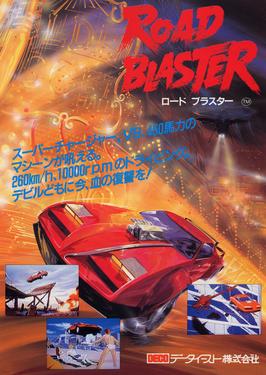
Road Blaster (ロードブラスター) is an interactive movie video game developed by Data East featuring animation by Toei Animation, originally released exclusively in Japan as a laserdisc-based arcade game in 1985. The player assumes the role of a vigilante who must avenge the death of his wife by pursuing the biker gang responsible for her death in a modified sports car. The game would later be ported to a variety of home formats such as the MSX and Sharp X1, Sega CD, LaserActive, PlayStation and Sega Saturn. The Sega CD and Mega-LD versions were released outside of Japan under titles of Road Avenger and Road Prosecutor respectively.
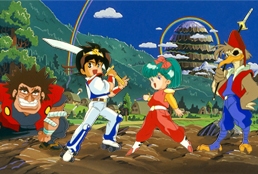
Mashin Hero Wataru is a mecha multimedia franchise originally created by Sunrise and Red Entertainment. The first series aired on April 15, 1988, replacing the 17:00–17:30 timeslot used for Transformers: The Headmasters. Sunrise credited "Hajime Yatate" for the storyline and Shuji Iuchi directed the series. The series employs a kinetic visual gag style, often employing characters running with their feet over their shoulders derived from Sunrise's previous Super Robot anime series Choriki Robo Galatt.

The Legend of Heroes: A Tear of Vermillion is a 1996 role-playing video game developed by Nihon Falcom. It is the fourth game in The Legend of Heroes series, and the second in the Gagharv Trilogy. Originally released for the NEC PC-9801 in 1996, it was later released for the PlayStation in 1998 and Windows in 2000. A remake was released for the PlayStation Portable in 2005, which was the first North American release of a Legend of Heroes game since Dragon Slayer: The Legend of Heroes for the TurboGrafx-16. The North American release dropped the number from the title.
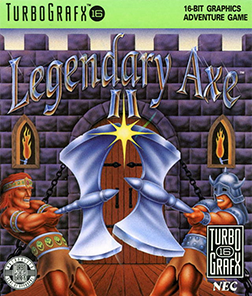
The Legendary Axe II is a horizontal platform video game created in 1990 by Victor Musical Industries. It is the follow-up to The Legendary Axe.

Dragon Slayer: The Legend of Heroes II is a 1992 role-playing video game by Nihon Falcom. It is part of the Dragon Slayer series and the second entry in The Legend of Heroes subseries. The game first released for the NEC PC-8801 before being ported to the NEC PC-9801, FM Towns, PC Engine, Mega Drive, Super Famicom and MS-DOS.

Record of Lodoss War is a franchise of fantasy novels by Ryo Mizuno based on the work he originally created for a world called Forcelia as a rules-free setting for role-playing games (RPGs). There have since been multiple manga, anime and computer game adaptations, several of which have been translated into English. The plots generally follow the conventions and structure of the RPG systems including Dungeons & Dragons and Sword World RPG, in which several characters of distinct types undertake a specific quest.
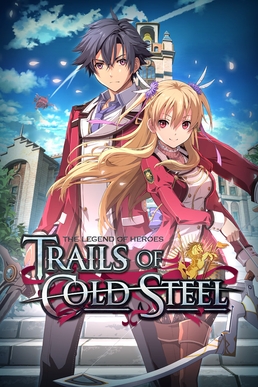
The Legend of Heroes: Trails of Cold Steel is a 2013 role-playing video game developed by Nihon Falcom. The game is a part of the Trails series, itself a part of the larger The Legend of Heroes series. It was initially released in Japan for the PlayStation 3 and PlayStation Vita before being localized in English by Xseed Games in 2015.

The Legend of Heroes: Trails at Sunrise, known in Japanese as Akatsuki no Kiseki, is a 2016 role-playing gacha game developed by UserJoy Technology and published by Nihon Falcom. It is a spin-off of the Trails series, itself a part of The Legend of Heroes franchise, and was first released in Japan for browsers. Trails at Sunrise was later ported to Windows, PlayStation Vita, PlayStation 4, Android, iOS, and Nintendo Switch. The PlayStation and Switch versions of the game were discontinued in 2022.

















